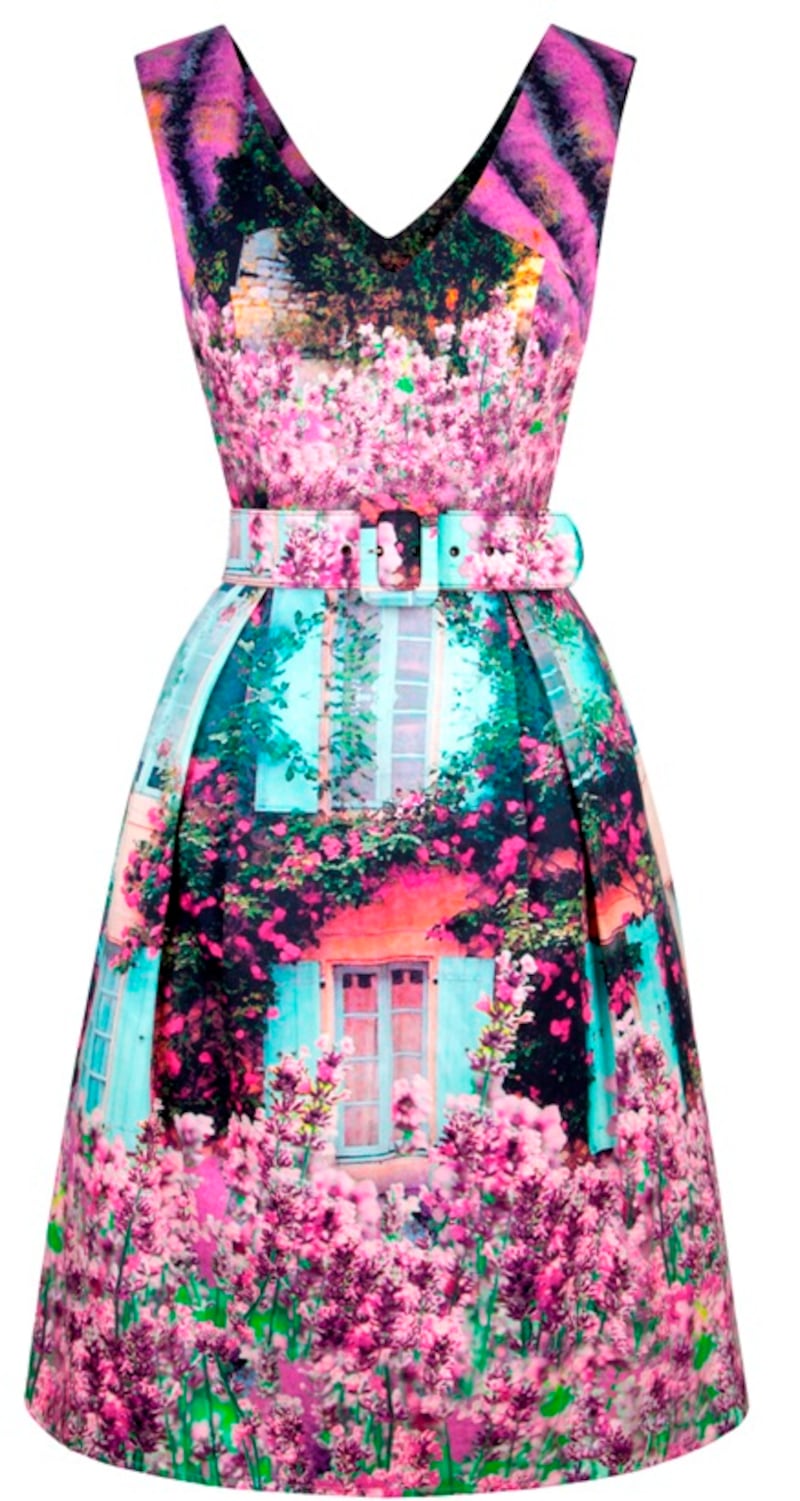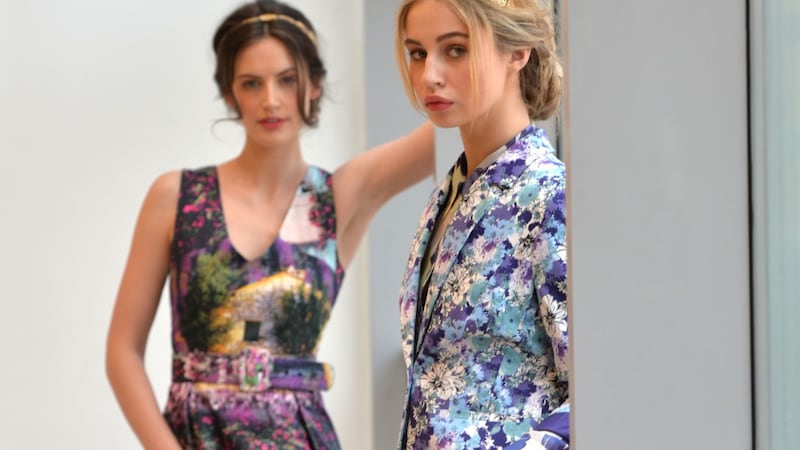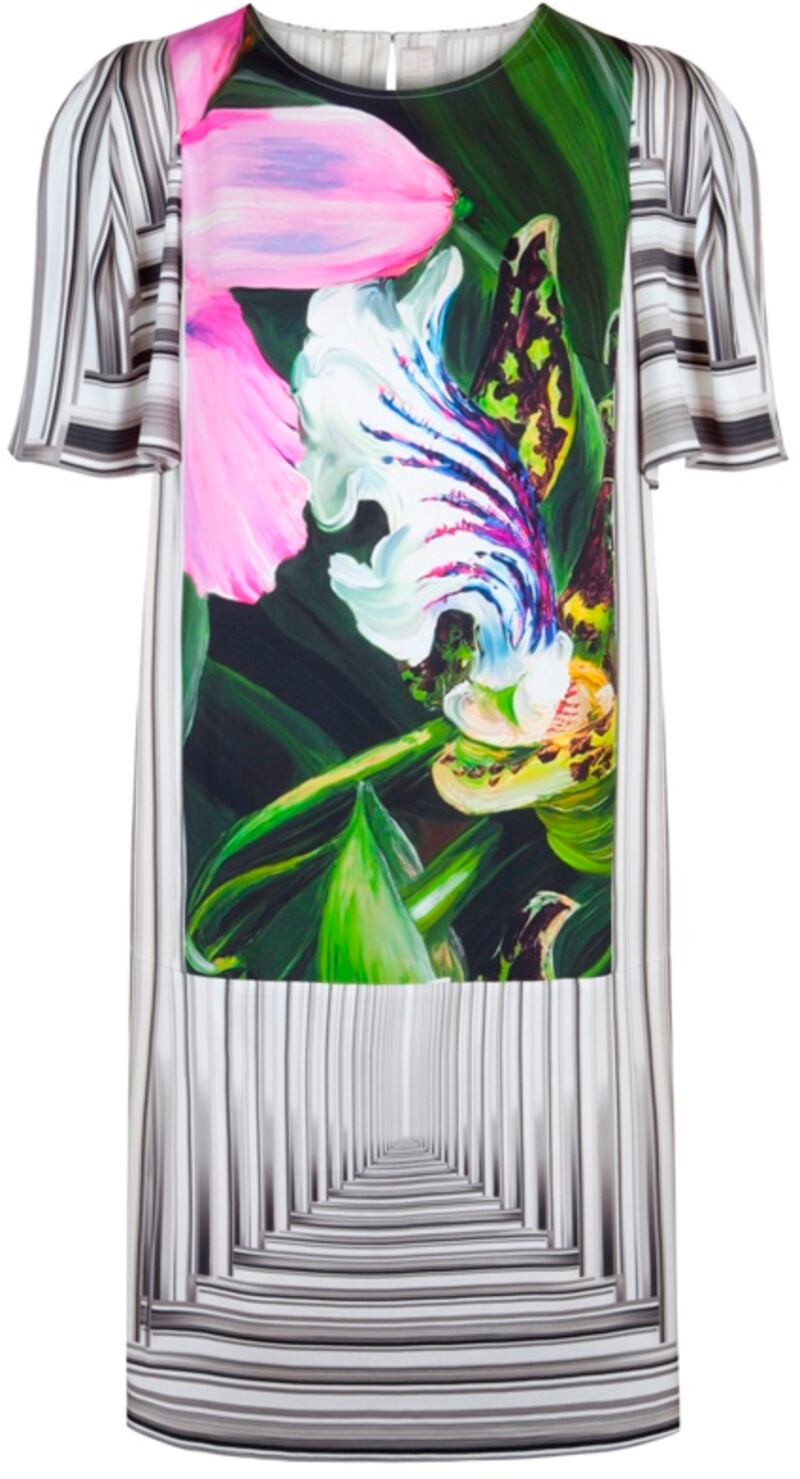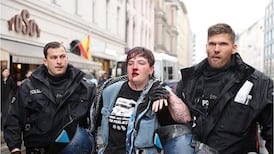
There was nothing temperate about Stephanie Solomon’s spring fashion forecast. “Your tights, throw them out,” she urged. “Get rid of your hats, your scarves, but most of all those hose. You never want to see them again.” Solomon, the outspoken fashion director of Lord & Taylor, was as good as her word, turning up for lunch on a rare mild afternoon earlier this month, her own calves bared in anticipation of a season that is shaping up, in her assessment, as “the biggest celebration we’ve ever seen.”
Extreme though it sounds, hers is the feisty reaction to a seemingly endless winter, the emotionally charged response to months of pent-up yearning for a long-awaited thaw. Similar sentiments are being echoed this year by a cohort of merchants, trend seers and designers exhorting their customers to shrug off their woolly layers for a string of buoyant mood-lifters. What are they championing? Calf-grazing skirts; cropped, arc-shouldered tops that just meet the high-rise waistlines of the newest pants or skirts; and trousers so fluid they ripple. Just as high on their lists: zesty neoprene or mesh pieces borrowed from the gym. And, most compellingly, a profusion of flowers: a lavish visual metaphor for the promise of spring.

“You cannot talk about the season without talking about the floral printed dress,” said Beth Buccini, a partner, with Sarah Easley, in Kirna Zabte, the SoHo outpost for adventurous design. Easley was no less effusive, adding, “We’re seeing a garden explosion of florals in a thousand variations.” Like leopard and cheetah prints before them, florals have become so pervasive in the marketplace, she added, that they are poised to become “the new summer neutrals.” Poppies and peonies, daffodils and daisies and a gaudy profusion of hothouse blooms have overtaken the selling floors. Their outsize blossoms, moodily etched on dark grounds, lending vibrancy to everything from sculptured jackets to maxi-dresses, backpacks and Birkenstocks.
Mixed with dots or geometric computer prints, offered straight up in nostalgic wallpaper patterns or blown up in 1940s and ‘50s retro designs, flowery prints can soften the starchiness of an architecturally structured dress or a skirt that stands primly away from the body. They can provide a giddy counterpoint to a rigorously pared-down silhouette, as Sheila Aimette, a vice president of WGSN, a trend forecasting company, noted.
“There’s nothing old-fashioned or floofy about them,” she said. “They give women a reason to stray from their comfort zone when they shop.” Retailers are banking on it, making it a mission to take the floral message viral, spreading a contagion intended to tempt even once skittish consumers. “Whenever it’s hard to get women to engage in buying fashion, don’t be surprised if big, bold florals come out,” said Marshal Cohen, the chief industry analyst with the NPD Group, which reports on consumer trends. Noting that sales of women’s apparel have lagged behind men’s for the first time in a decade, he added that, along with pulsing color, eye-catching florals have become an essential merchandising tool. “They are a way of getting consumers to recognize that something new and dramatic is happening,” Cohen said.

London designers like Peter Pilotto (see left), Mary Katrantzou and Erdem Moralioglu have virtually built their brands on splashy botanical prints. But garden patterns were a brash departure for Markus Lupfer, who turned away from his customarily restrained palette this season to create a flurry of patchwork florals inspired by Tracey Emin’s sophisticated quilts.
“What I wanted to achieve,” he said, “is a play between something nostalgic and something very modern, between something feminine and a little naughty.” And the response to his cheery but worldly designs has been encouraging. “They were quite new for us, but good for our brand,” he said. “I feel like it’s something exciting to build up in the future.” Others began mapping out their spring direction as early as a year ago. “You have a feeling that something is in the air,” said Tom Mora, the vice president for women’s design at J. Crew, who took a chance on floral patterns unlike any seen in nature.
Last season people responded enthusiastically to what Mora calls the “punk floral,” an offbeat combination of orchids and pansies on a bright green ground. It was photographed on Jenna Lyons, J. Crew’s chief creative officer, and it is still a smash on Pinterest boards. It is flaunted as well by actress Leslie Mann, who wears a punk floral rash guard in “The Other Woman,” a revenge comedy set to arrive in theaters this month.
“For us that pattern was the beginning of this new idea of prints,” Mora recalled. Eventually, he said, he found himself experimenting with a host of “optimistic, very clean, crisp florals,” which, in his view, are the fitting complement to a crisper, cleaner silhouette. He put stylized floral designs on shorts and dresses, even on a spongy neoprene fabric, operating from a conviction that combining structured shapes and floral patterns was, he said, “somehow the right thing to do.”
Of course, the garden party look will not appeal to everyone. Linda Fargo, the Bergdorf Goodman fashion director, is betting that shoppers, some of whom have already invested in longer hemlines and knife-pleated skirts, will go for tribal patterns, art-inflected designs and, among the more adventurous, Etsy-like homespun effects. And, she added, “anything with fringe, bomber jackets and mandals” (that last fashionspeak for the season’s mannish lug-soled sandals).
Like the sneakers and clumpy sandals that are standing in for floppy thongs this year, fringed bags, hand-tooled accents and deliberately frayed hems can inject an engagingly disruptive note into a relatively formal season. Much the same can be said for the upscale athletic wear filtering into stores. Sweatshirts embellished with ribbons and appliques, overblown pansies and sprigs of lace are flippant yet look decorous enough to wear with a streamlined calf-length pencil skirt.
Prada’s introduction of ribbed, triple-banded tank tops and leg-warmers, a raffish nod to the street/sports insignia of West Coast girl gangs, were echoed in the marketplace. So were the bomber jackets at Marc by Marc Jacobs and Marni, which included a gem-encrusted version that would likely appeal to even the most sports-averse consumer, and may tempt her, for the moment at least, to retire her well-worn biker jacket.
“Do you really need another motorcycle jacket?” Cohen asked rhetorically. Not likely, when there are so many racy alternatives. “Athletic clothes are going from the gym to the office and even out to dinner,” he pointed out. “They have become acceptable around the clock.” More than acceptable, they have proved a reliable means of relaxing or, indeed, subverting a look that may otherwise seem contrived. No surprise then that this track-and-field trend is being adopted by the fashion set, whose members were among the first to perceive that, in matters of style, few sins are more grave or weirdly shaming than trying too hard.
Ruth LaFerla
New York Times Service











